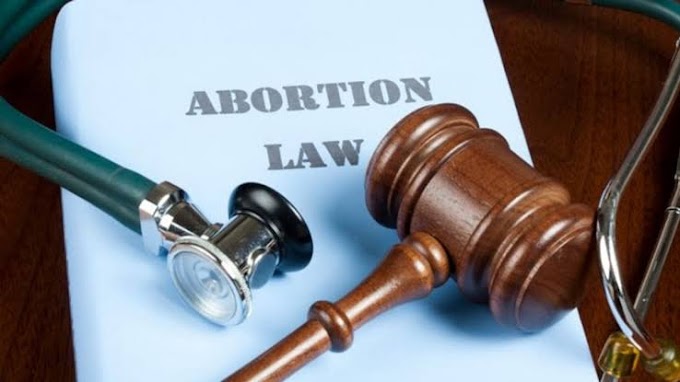Men's rights in India and legal aspects
An Introduction to the Men's Rights Movement in India
The men's rights movement in India tries to address concerns unique to men's gender. It seeks to address claimed injustices in the laws governing domestic abuse, divorce, and marriage. This movement strives for gender equality, better knowledge of men's rights, and societal improvements to create a fair and more equitable environment for men and women in the distinctive cultural landscape of India.
While not a recognized movement, men's rights activism has existed in India since the 1990s. To speak up for the "husbands of India" and to demand rights for men, the Pirito Purush, the Purush Hakka Samrakshan Saimiti, the Patni Atyachar Virodhi Morcha, and other pioneering men's rights organizations from Kolkata, Mumbai, and Lucknow took to the streets.
Historical causes for the men's rights movement to start in India.
Due to historical factors, including deeply ingrained patriarchal traditions, changes in family and divorce laws perceived as biased against men, evolving gender roles that confuse, worries about unfounded accusations, and a stigma surrounding men's mental health needs, the Men's Rights Movement in India was born. Urbanization and modernization, accompanied by quick cultural and social changes, created tensions and uncertainty. These causes together inspired some men to fight for their rights and interests in an altering social environment. However, it is essential to note that the movement includes various viewpoints and takes different approaches to tackling gender-related issues.
Men's rights vs. gender equality
A complex social, cultural, and legal interaction influences men's rights and gender equality in India. It is a fundamental premise that equal rights and opportunities for all genders are guaranteed to eliminate previous gender-based inequities. To promote women's empowerment in various fields, it addresses structural prejudice against them.
The men's rights movement, on the other hand, promotes addressing particular issues they believe harm males. These worries include the alleged biases in family and divorce laws, child custody issues, and unfounded accusations. While the goal of gender equality is to eradicate prejudice and stereotypes, the men's rights movement claims that some legal restrictions and societal expectations unintentionally disadvantage males.
A fair and just society must be achieved by balancing various viewpoints. Although both ideals can coexist, difficulties arise when avoiding instances where they can clash. It takes careful legislative reforms to advance gender-neutral laws while ensuring that the historical disadvantages women encounter have been repeated to strike the correct balance. It is a complex topic that develops inside India's dynamic social environment.
Ø Indian laws that discriminate against gender equality
The IPC's Section 498A, which addresses dowry harassment, has drawn criticism for its potential abuse, which could result in erroneous allegations and the detention of males.
Some contend that the Domestic Abuse Act (PWDVA), which primarily protects women, may not effectively meet the needs of male victims of domestic abuse.
Laws governing alimony and maintenance following divorce favor women since they occasionally call for males to make financial contributions even if they are unemployed or underemployed.
Child Custody Laws: After a divorce, dads' contact with their children is often restricted because custody rulings frequently favor mothers.
Adultery laws were viewed as disproportionately hurting men while being decriminalized.
The Sexual Harassment of Women at Workplace Act is criticized for not having mechanisms for dealing with unfounded claims against men.
Case laws
State of Bihar v. Arnesh Kumar (2014) The significance of safeguarding people's rights, particularly those of men, from arbitrary arrests under Section 498A of the Indian Penal Code (which addresses dowry harassment) was highlighted by this case. To prevent abuse of this section and shield people from wrongful arrests, the Supreme Court of India issued recommendations.
In the 2005 case Sushil Kumar Sharma v. Union of India, This instance brought to light the problem of bogus dowry harassment claims. The Supreme Court emphasized the damaging effects of false accusations on a person's reputation and asked for a more impartial approach to handling these situations.
Sneha Ahuja v. Satish Chander Ahuja (2019): The importance of shared parenting and the shared accountability of both parents in child custody disputes was highlighted in this case. It emphasized how the dynamics of family roles and obligations are shifting.
In the 2010 case of Shimbhu v. Renuka, the court determined that a husband was entitled to maintenance from his wife when he was physically unable to support himself. It served as an example of the idea behind gender-neutral maintenance legislation.
Conclusion
In conclusion, perceived gender disparities in laws and societal norms have sparked India's men's rights movement. It raises important issues like the stigma associated with men's mental health and the unfairness of family laws. It is criticized for some extreme viewpoints, however. It might be challenging to balance addressing these justifiable worries and promoting gender equality. The movement recognizes that gender dynamics in India are evolving within a diverse cultural context. It emphasizes the importance of nuanced discussions and legal reforms to create a more equitable society where the rights of all individuals, regardless of gender, are safeguarded and respected.
**Author:- Muhammed Aslam, Student at Symbiosis Law School, Hyderabad




![Freedom of Speech in India [Indian Supreme court and Law of Sedition]](https://blogger.googleusercontent.com/img/a/AVvXsEiGLLUmLKq5Da6xDZplasOZHKRj-jOhWPkoeuy0_Eq757tUpOiHz-xooXwIlAjF0-hmBfi-TtMIv6on_sVgBXVq4wbWwnbsqLOcNX22S8C2aSq-ZuK3vn9wWAx8tXByYOBfwc0hs6b8RJV84YNFG2greouGKjup6g8kN-xVlchW33VHdSSmrhLC1BUEVbGp=w680)





